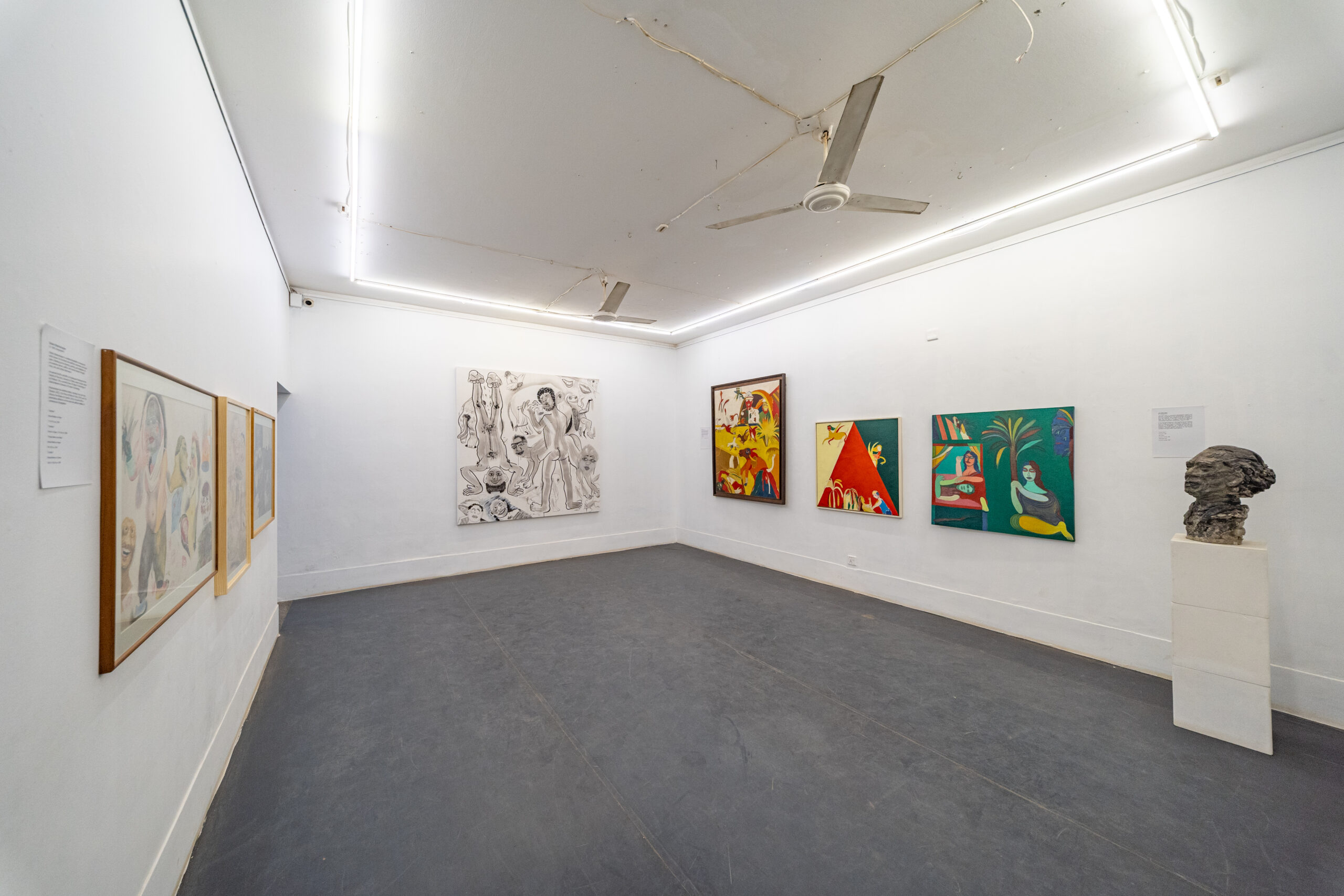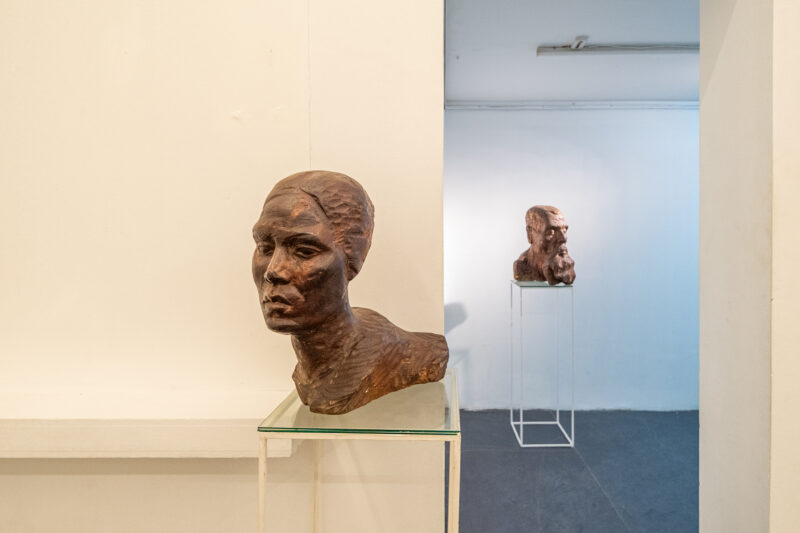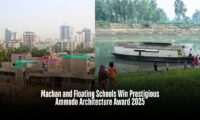
Titled “Phire Dekha/Re See,” the ongoing exhibition at the capital’s Kalakendra is comprised of the most heavyweight line-up of artists in a single group show in this gallery’s journey so far. Although a young gallery run by the veteran Wakilur Rahman, Kalakendra has already cemented its place as a hub for regular exhibition-goers of Dhaka, and its latest exhibition is another beautiful stroke in its canvas.

Kazi Rakib, Deepa Haq, Dhali Al Mamoon, Dilara Begum Jolly, Nisar Hossain, and Shishir
Bhattacharjee, Saidul Haque Juise, Fareha Zeba, Ratan Mojumdar, Habibur Rahman, Ruhul
Amin Kajol, Lala Rukh Selim, Towfiqur Rahman, and Wakilur Rahman—if you are an enthusiast of the Bangladeshi art scene, you are at least familiar with a few of these names from this stellar list of Bangladeshi artists. These names, whether as a promising back-in-the-day or established artist, as a respected teacher for generations of art students, or as a curator, are all notable in their own ways in a detailed history of the Bangladeshi art scene.
Growing up in a country where there is a mass tendency of collective amnesia towards the importance of archives and still no organized/proper practice of museum and gallery culture, if you have ever wondered what the art of some notable names looked like when they were at your and your Charukola friends’ age, “Phire Dekha” provides you a glimpse.
The show gathers these fourteen artists, whose works once characterized the visual rhythm of postwar Bangladesh. The display, which runs from 1975 to 1995—an era marked by instability, transformation, and fragile hope—does not attempt to rebuild history but rather to reflect on it through the lens of art. Those two decades were more than just years on a timeline; they were a line of reckoning.
Bangladesh, yet learning the lexicon of its freedom, was seeing seismic worldwide shifts—the demise of socialism, the growth of neoliberal dreams, and the gradual disintegration of collective idealism.
These factors undoubtedly influenced how artists thought, created, and responded to their surroundings. The show makes no conclusive statements about that age; rather, it creates a contemplative space between history and present, memory and method, inviting visitors to rediscover what art previously possessed and what it continues to disclose.
“Re See” is curated without the weight of theory or curatorial rigor, instead assembling pieces of real experience rather than a predefined theme. All of the participating artists were young art students in the years following the Liberation War. Some were members of collectives such as Dhaka Painters or the Somoy Group, while others forged their own paths of discovery. Their works together provide a mosaic of artistic and emotional progress, a portrait of a generation that used color, form, and gesture to express its times.

The exhibition features paintings, sculptures, prints, sketches, and mixed-media pieces, the majority of which are from the artists’ personal archives. The mix of mediums—etchings, acrylics, watercolor, and assemblage—reflects the restless search for words that marked Bangladeshi art throughout those decades.
“We seldom get to see the works that shaped our contemporary practice,” he observed. “Between 1970 and 1990, the political and cultural landscapes of our country changed dramatically, and those changes inevitably entered art. The young artists of that period absorbed both global and local influences, reinterpreting them through their own materials, symbols, and languages. Many have since matured into leading figures, guiding the next generations of creators,” said art historian and critic Professor Abul Mansur.
These words capture the essence of “Re See”; it is not nostalgia but an act of rediscovery, an artistic archaeology of thought and feeling.
The exhibition runs daily from 4 p.m. to 8 p.m. until November 15 at Kalakendra.
Written by Shahbaz Nahian





